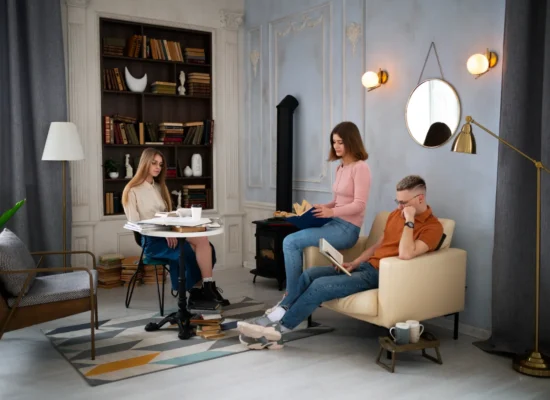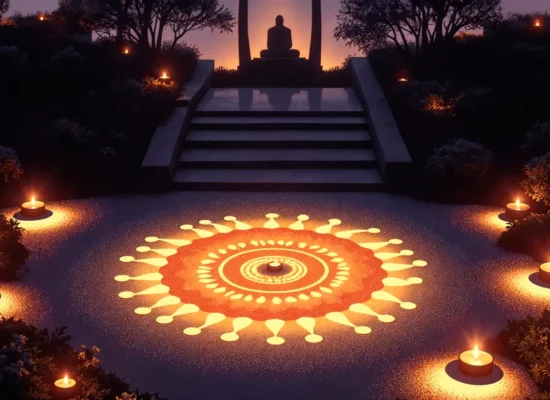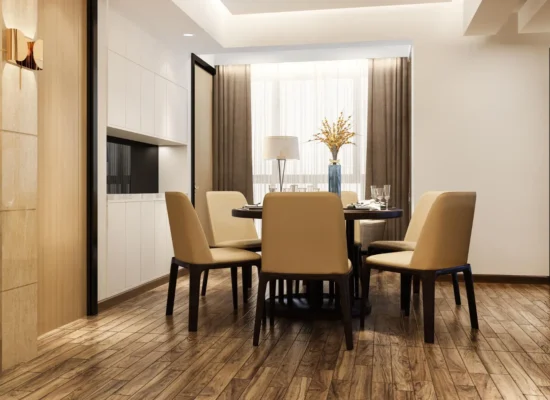Interior design is the process of designing or beautifying spaces with a specific emphasis on style and comfort. Whether in a home for residential purposes, a business setting, or even in a small hotel, an interior designer is vital to designing spaces that are fashionable and will meet the needs of users of the particular space. Now, you might be thinking, How does an interior designer design an interior that is beautiful and useful? There’s no doubt that a well-designed interior space can look fabulous. Through this blog, you will read about the major role of interior designers in making the space look beautiful. So, stay consistent with us till the end.
1. Understand Space
Interior designers see not only width and height in a room; they see function. For instance, bedrooms demand a special light that is not needed in a kitchen or a working space. Based on these considerations, a designer will be able to determine the level of activity in the particular premises intended for use, the number of people, and the kind of life the occupants lead. Based on knowing the function of the space, the designers can then select the right designs that would not only beautify the environment but also amplify the comfort level.
2. Color Palette
Regarding colors, the interior design is not exempt because color contributes to the mood of a room and even the atmosphere of a home. They understand how the colors can work well to pull together the different schemes and make flow through the room.
They may choose one of the primary colors and then add secondary or complementary colors as an addition. For instance, a dominant color is grey or beige, a color considered dull, but beneath it can be bright cushions, paintings, or even walls to complement. Other techniques also include using color psychology, which is also an effective strategy. For example, pale and pastel blues and greens are serene, whereas reds and oranges are invigorating and arousal. Interior designers can effectively blend all psychological effects with the requirements of the consumers or users of the room.
3. Balance and Proportion
The tradition of harmony is also reflected in the fundamental guideline of interior design, which is the balance of symmetry between furniture and ornament placement. Interior designers ensure that certain objects are in a room, but not too many or too few, since this only takes space. They use different types of balance:
Symmetrical Balance: Where objects on each side of a midpoint are equal and give a balanced environment.
Asymmetrical Balance: Where the equilibrium is with different objects of various sizes or forms, provided that it has a more relaxed look.
Radial Balance: Architectural elements from which parts expand outward to a center, usually for stylistic purposes.
The same goes for proportionality in its concept, which is equally important. Interior designers ensure that the furniture, lighting, and overall decoration in the room are within reach and do not compromise the available space.
4. Texture and Materials
These are other common competencies identified among products and services, although their occurrence is considerably less frequent compared to color or shape.
It is by means of identifying texture that a space can be enhanced to have an aesthetic appeal as opposed to a flat surface. Selecting and using different materials and textures, such as wood, metal, glass fabric, and natural stone, adds tangibility and sentiments to alteration and erosion. The set of stained wooden furniture, together with a velvet couch, polished wooden table, glass lamp, and wool rug, can create contrast in the design and also give a warm atmosphere to the interior. Another factor that helps to consider the issue of the perception of the room with different senses is the textural characteristics.
Shiny and smooth items like glazing or metals exemplify modernity, while carpet or sofa-like materials are comfy and warm. When done correctly, they can enhance the depth and meaning of space without overstimulating them by stacking up contrasting characters of touch.
5. Strategic Use of Lighting
Lighting is claimed by most designers to be the most important element in interior design. Ambient light can help reveal the richness that colors and textures add to the look and feel of a dwelling. Any interior designer understands how lighting can be used to affect the atmosphere as well as focus on specific features in the room. They incorporate ambient, task, and accent lighting to make a room lively and operational.
An appearance or ambient lighting basically offers the initial level of illumination and helps create the basic atmosphere.
- Accent lighting is more concentrated and shines at particular workplaces like working desks or kitchen tops.
- Accent light creates focus on the area, bringing a dramatic effect and drawing attention to specific aspects such as the architecture of the building, a painting, a sculpture, or any other novelty in the building.
Different layers of light sources can be incorporated when designing a room to create a good-looking and welcoming room.
6. Incorporation of Unity, Identity, and Uniqueness
To make a place desirable and gain attention, designers introduce characters into that space. Some of them contain photographs, paintings, commendable and recognizable objects, or peculiar furniture brought by individuals who live there. Perfect for graphic design is picking up accessories that are unique and can become real cognominal; it can be a picture that will dominate the room, a bright chandelier, or a sculpture.
Preventive design produces pleasant and unique spaces that can appeal to the audience’s emotions and finally make them feel the individuality of the designed zones. If a statement is chosen well, it defines and unifies the room decor and turns into a focus point that guests discuss.
7. Attention to Detail
The positions of handles on the cabinets and the proper organization of design objects on the shelves are very crucial, and therefore, most designers consider each of these parts. They are what set a room apart from being just okay, but a special room that has undergone interior design truly adds a different aura to the whole place.
More specific components include curtain materials, cushion positioning, an accessory selection that is fashionable yet practically oriented, or art placement, all of which work together with a particular focus on how the design of the living space looks harmonized and exclusive.
Major Takeaway
Interior design is one of the most elegant professions anybody could think of, as it transforms any space into something pleasant and useful. By having the ability to comprehend the reasons for a certain place to be coloured in a particular way, having the balance between proportions, adding feelings with textures, being creative with lights, and adding a personal touch and details, the two make a place not only beautiful but stunning. Interior designers at DE Lab are certified and offer the best services for creating a living, work, and public spaces environment that makes people feel comfortable and connected to the interior environment they are in.




